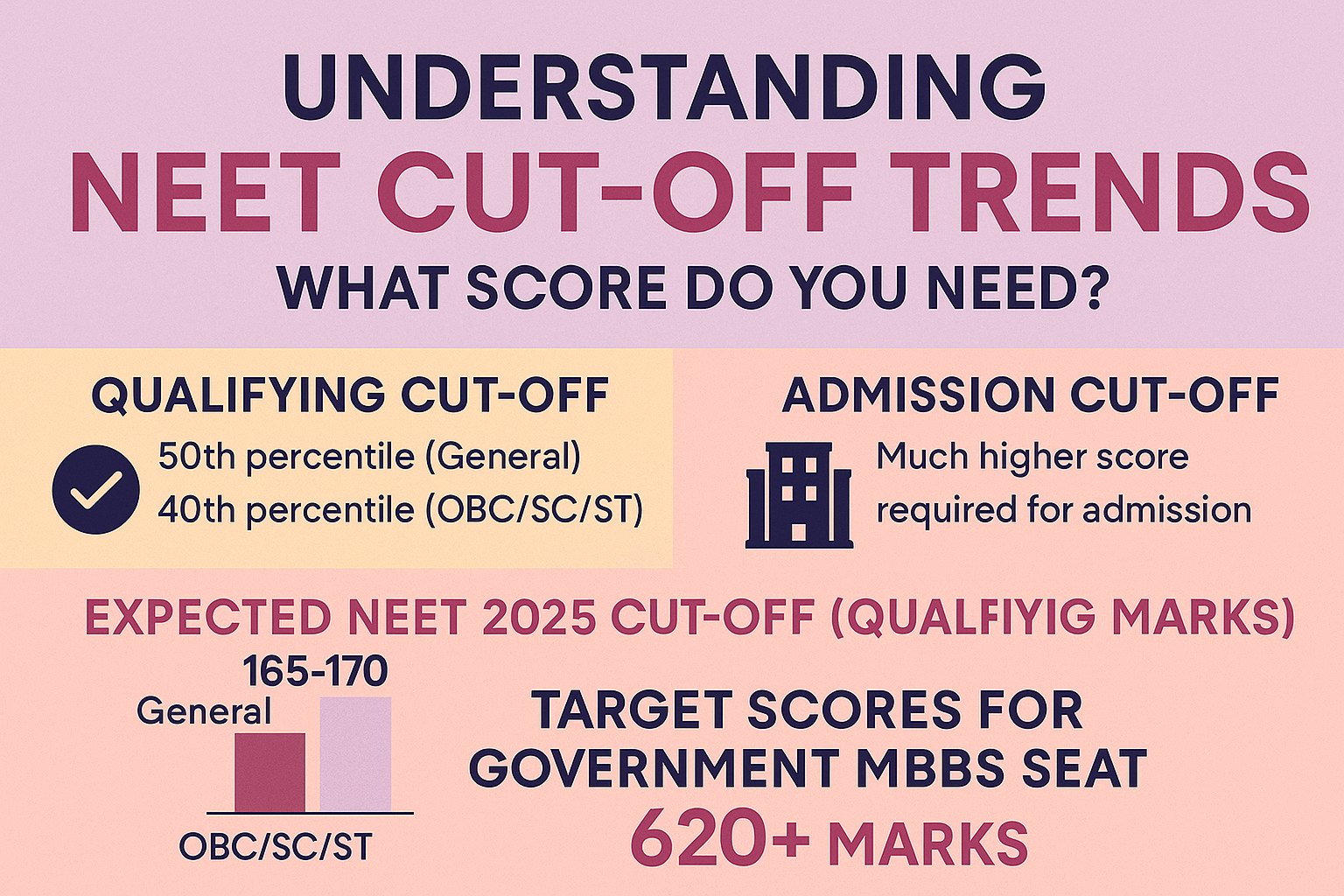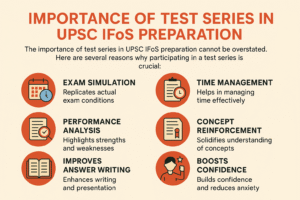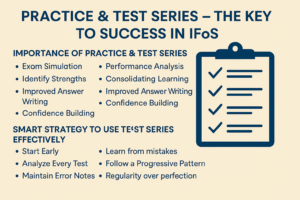The National Eligibility cum Entrance Test (NEET) is the gateway to medical and dental colleges across India. Every year, lakhs of aspirants compete for limited seats, making the NEET cut-off one of the most crucial aspects of preparation. Understanding cut-off trends helps you set realistic score targets and create a focused study plan.
In this guide, we’ll break down what the NEET cut-off means, factors affecting it, previous years’ trends, and the score you should aim for.
What is the NEET Cut-Off?
The NEET cut-off is the minimum score required to qualify for admission to medical and dental courses. It is announced by the National Testing Agency (NTA) and varies based on:
Category (General, OBC, SC, ST, EWS, PwD)
Type of college (Government, Private, Deemed)
State quota vs. All India Quota (AIQ)
Types of NEET Cut-Offs
Qualifying Cut-Off
The minimum percentile required to be eligible for counselling.
Example: For General category, it is usually 50th percentile; for SC/ST/OBC, it is 40th percentile.
Admission Cut-Off
The score at which admission closes for a particular college or course.
Much higher than the qualifying cut-off.
Factors Influencing NEET Cut-Off Trends
Several factors cause yearly fluctuations in NEET cut-offs:
Number of candidates appearing
Difficulty level of the paper
Number of available seats
Overall student performance
Reservation policies
Changes in syllabus or exam pattern
Previous Year NEET Cut-Off Trends (Qualifying Percentile & Marks)
| Year | Category | Percentile | Marks Range |
|---|---|---|---|
| 2024 | General | 50th | 720–164 |
| OBC/SC/ST | 40th | 163–129 | |
| 2023 | General | 50th | 720–137 |
| OBC/SC/ST | 40th | 136–107 | |
| 2022 | General | 50th | 715–117 |
| OBC/SC/ST | 40th | 116–93 |
Note: These are qualifying cut-offs. Admission cut-offs for top government colleges are much higher.
Expected NEET 2025 Cut-Off (Qualifying Marks)
Based on previous patterns, here’s an estimated range for 2025:
General Category: 165–170 marks
OBC/SC/ST: 130–135 marks
NEET Admission Cut-Off for Top Government Colleges
To secure a government medical seat, you’ll need much higher scores. Based on the last 3 years:
Top AIIMS (Delhi, Jodhpur, Bhubaneswar): 675+ marks
Top State Government Colleges: 640–660 marks
Average Government Colleges: 610–630 marks
Private Medical Colleges: 500–550 marks
How to Decide Your Target Score?
Identify your category – Cut-offs differ for each.
Check your preferred college’s closing rank – Refer to official MCC and state counselling data.
Account for yearly variation – Aim 10–15 marks above last year’s cut-off.
Focus on mock tests & accuracy – Avoid negative marking.
Tips to Beat the Cut-Off
Start early – Build strong NCERT fundamentals.
Practice previous year papers – Understand difficulty patterns.
Regular mock tests – Improve speed and accuracy.
Revise smartly – Focus on high-weightage topics.
Time management – Practice completing papers within 3 hours.
Key Takeaways
The qualifying cut-off is just the eligibility benchmark, while the admission cut-off is the real challenge.
For a government MBBS seat, aim for 620+ marks (general category) to be safe.
Keep track of official announcements from NTA, MCC, and state counselling authorities.
FAQs on NEET Cut-Off Trends
Q1: Is the NEET cut-off the same every year?
No. It changes based on difficulty level, number of candidates, and overall performance.
Q2: What is the difference between qualifying cut-off and admission cut-off?
The qualifying cut-off makes you eligible for counselling, while the admission cut-off determines the actual seat allotment.
Q3: Can I get a government seat if I just clear the qualifying cut-off?
No. You need to score well above the qualifying cut-off to secure a government seat.
Q4: How many marks are needed for AIIMS Delhi?
Typically 675+ marks for General category in recent years.
Q5: Will NEET 2025 cut-off be higher than 2024?
It depends on exam difficulty and number of candidates, but trends show a gradual increase over time.










